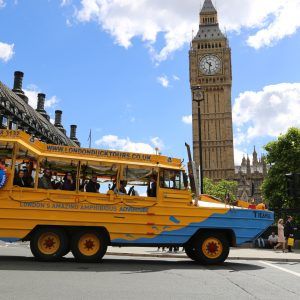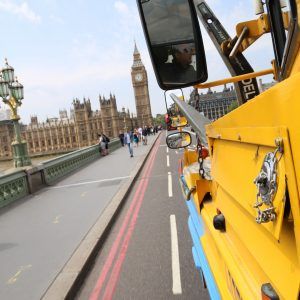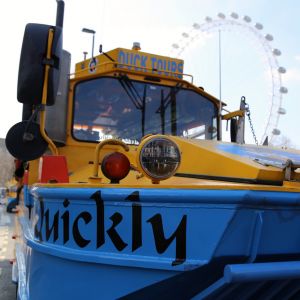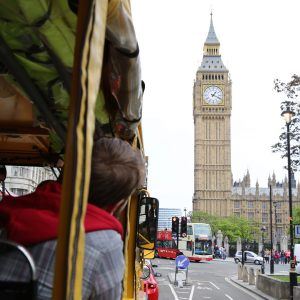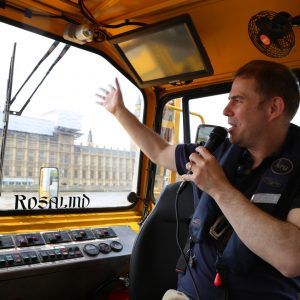What represents the unique pomp and pageantry of London more than the sight of a dashing Household Cavalry member on horseback? Well then, let London Duck Tours show you Horse Guards for all that and more. At the front entrance to Horse Guards stands a mounted cavalry member or guard. Each red coated guard “stands guard” on horseback for exactly one hour, impervious to the cameras, selfie sticks, and requests for smiles, in full military regalia. The horse is pretty stony faced too, but can sometimes be a little spooked by the crowds, so keep a safe distance – these chaps are at work and serious work it is too. For more on the guards see our page on the nearby Wellington Barracks.
Anyone for jousting?
The sprawling site of Horse Guards Parade is rich in history, dating back to when it formed a central and ceremonial part of the medieval Whitehall Palace. Henry VIII regularly held lavish jousting tournaments here, the largest and most magnificent was in 1540, when Old Hal invited knights and princes from across Europe to test out their sporting prowess. We imagine Henry VIII was the best jouster of all, but then again he would be, wouldn’t he?!
Trooping of the Colour
Every June sees the modern State occasion of the Trooping of the Colour, a grand military spectacle designed to celebrate the official birthday of the monarch. For many years Queen Elizabeth II took part in the ceremony riding on horseback. Today Her Majesty still very much enjoys the horsey spectacle, but these days takes it all in from a comfortable seat on a specially built podium. Public tickets are available for the grand celebration itself, but they’re few and far between, and you need to know someone who knows someone, if you get our meaning! London Duck Tours have not yet managed to watch this particular London show, but we’ll keep that date in our diary free just in case.
The Citadel
Behind Horse Guards stands a rather imposing and somewhat ugly brown lump of a building, semi covered in ivy. This is the Citadel, a bomb proof bunker built during World War Two to house the Royal Navy operations unit, and still in use to this day. Wouldn’t get planning permission for that today would they?


